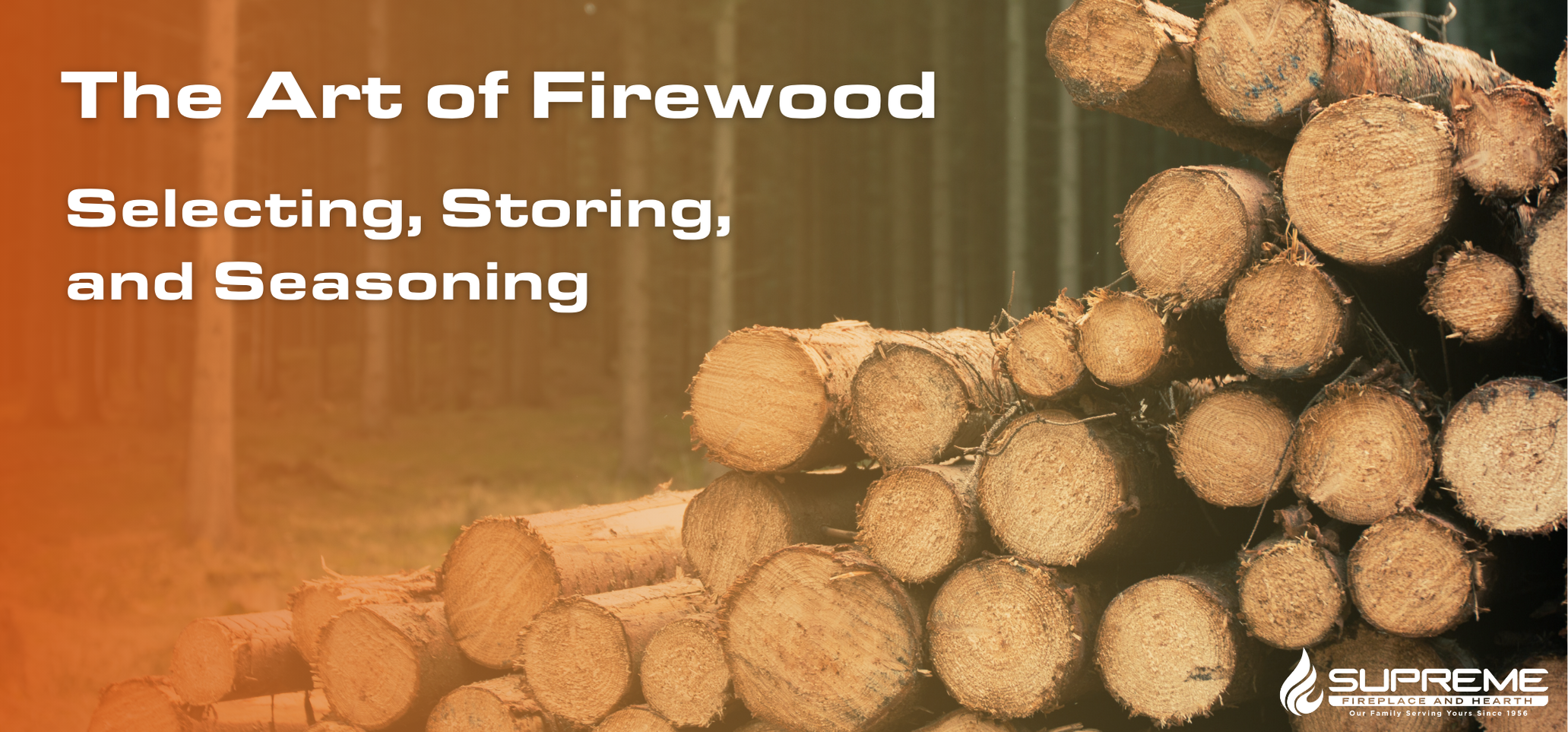Fireplaces give us more than just heat; They create a special, cozy atmosphere for family gatherings, quiet nights, and peaceful holidays.
It takes a mix of practice, skill, and knowledge to build the perfect fire. To get the perfect, cracking fire with a warm, gentle glow, you’ll want to be sure to master the art of firewood. In this blog, you’ll learn some helpful firewood tips, including how to select, store and season your firewood.
The Secret to Creating a Perfect Fire
It may seem like a simple task, but if you’ve ever been the one responsible for building a fire indoors, you probably know the effort, skill and even frustration that often goes into crafting that perfect, roaring fire. So what’s the first step to ensure a successful fire?
It all starts with the firewood! Understanding how to select, store, and season your firewood will not only improve your ability to create the perfect fire, but also ensure that you’re building efficient and safe fires, too.
Selecting the Right Firewood
The first step in achieving the perfect fire is selecting the right type of firewood. You might be surprised to learn that not all wood is created equal when it comes to burning. Hardwood species like oak, maple, hickory, and ash are ideal for long, steady burns and high heat output. These woods are dense and contain less resin, so they produce less creosote.
You may recall from a previous blog that creosote is a byproduct of burning wood that can build up in your chimney and cause chimney or house fires, so it’s important to be proactive in reducing its presence in your fireplace.
On the other hand, softwoods like pine, fir, and spruce burn faster and are excellent for kindling due to their high resin content, which helps ignite the fire quickly. However, because of their higher resin content, they produce more creosote and therefore should be used sparingly in indoor fireplaces.
Storing Your Firewood
Here’s one of the most important firewood tips: make sure you know how to store it! Wood should be stored in a dry, well-ventilated area. Be sure to store it off the ground to prevent moisture absorption and insect infestation.
A wood shed or a stack covered with a tarp works well, but you’ll want to ensure that the sides are open to allow air circulation. To deter pests, like insects, from infesting your home, avoid stacking wood directly against your house or other structures.
Pro tip: Stack your firewood in a crisscross pattern or in rows with gaps between them. This method promotes air flow, aiding in the drying process and preventing mold and rot.
Seasoning Firewood
While “seasoning” is typically associated with food, you can also season your firewood! We’re not recommending that you throw salt and pepper on your wood, though. In terms of firewood, seasoning is the process of drying wood to reduce its moisture content, making it burn more efficiently and produce less smoke.
Freshly cut wood, known as green wood, can have a moisture content of 50% or more– up to 100%. For optimal burning, firewood should have a moisture content of 20% or less.
Some reports show that getting green wood to less than 20% moisture can take at least six months, but can take up to two years. The time the process takes depends largely on the type of wood and your local climate.
To season firewood, you’ll want to cut it to your desired length, split it to increase the surface area, and stack it in a sunny, breezy location. Check the wood periodically for dryness by looking for cracks in the ends. For accurate measurements, we recommend purchasing a moisture meter.
Here’s Why Seasoned Firewood is Best
If you read that last section and wondered if using seasoned firewood is really necessary, trust us: it is! You can often purchase seasoned firewood locally from farms, markets, or even a neighbor if cutting and seasoning your own wood is too overwhelming.
Using well-seasoned firewood has many benefits:
- Higher Heat Output: Dry wood burns hotter and more efficiently, providing more warmth for your home.
- Less Creosote Buildup: A lower moisture content means less creosote formation, reducing the risk of chimney fires.
- Cleaner Burn: Seasoned wood produces less smoke and fewer pollutants, creating a healthier indoor environment and better air quality.
Bonus Tip: Choosing the Best Firewood for Your Fireplace
For the best fire and experience, use a mix of hardwoods for long-lasting heat, combined with softwoods for easier ignition. Always ensure your firewood is well-seasoned, properly stored, and ready for use.
By mastering the art of selecting, storing, and seasoning firewood, you’ll enjoy a more efficient, safe, and enjoyable fireplace experience.
Supreme: Your Go-To Fireplace Experts
We are your trusted experts for all things fireplace. From inspections to installations, Supreme offers a comprehensive range of services, including gas and wood-burning fireplaces, outdoor and indoor fireplaces, and fireplace repairs.
Our team is dedicated to ensuring your fireplace is safe, efficient, and beautiful. Visit us today to explore our wide selection of fireplace products and services.
Let us help you create the perfect fireplace for your home. Contact us today.

